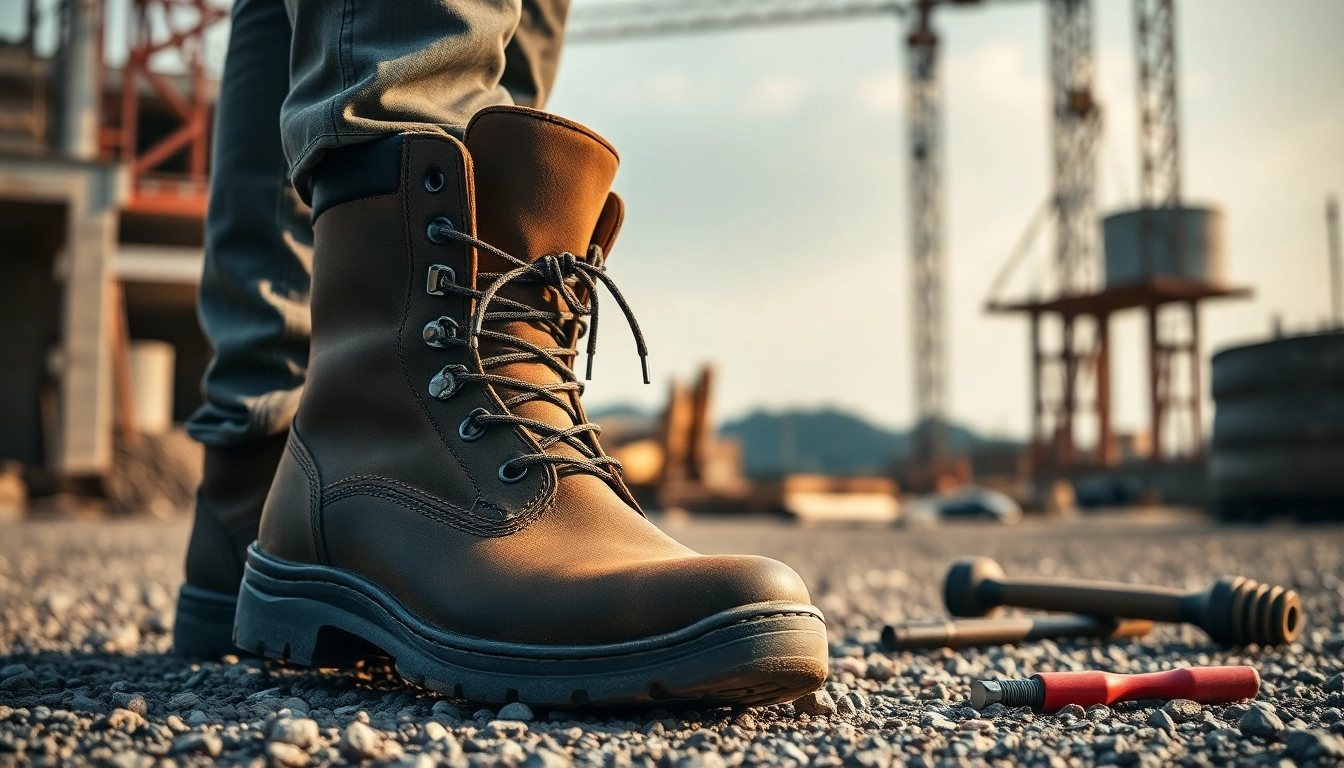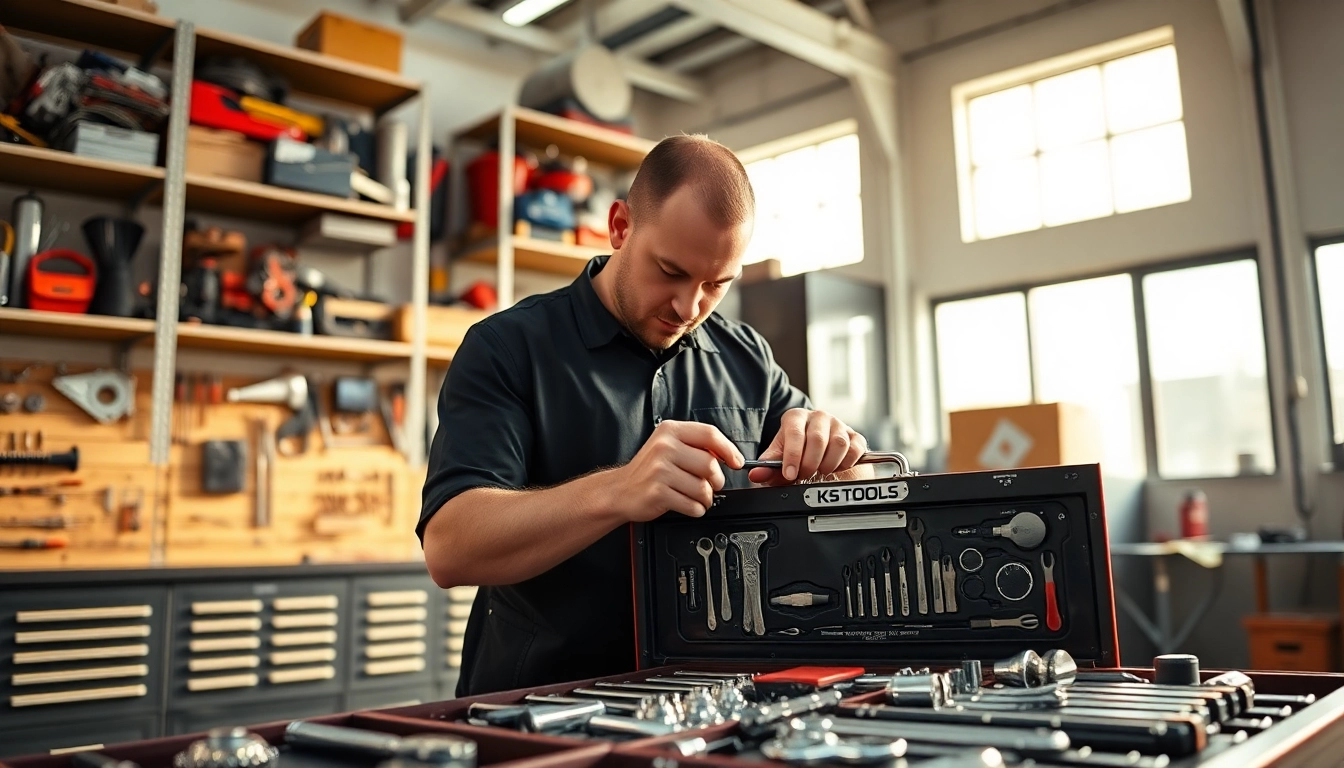Understanding the Importance of Safety Boots
When it comes to working in hazardous environments, the significance of wearing appropriate footwear cannot be overstated. Safety boots are meticulously designed to provide protection for your feet from various workplace hazards, including heavy objects, sharp tools, and slippery surfaces. Investing in quality safety boots is essential for anyone in labor-intensive jobs, as they can significantly reduce the risk of injuries and enhance overall workplace safety.
What are Safety Boots?
Safety boots are specialized footwear crafted to shield feet from potential hazards often encountered in work environments. They are characterized by a solid construction that includes protective components such as steel or composite toe caps, slip-resistant soles, and waterproof materials. These features make safety boots essential for workers in industries like construction, manufacturing, and warehousing, where foot injuries can lead to serious repercussions.
Key Features to Look For in Safety Boots
When selecting safety boots, several key features should be considered to ensure they meet your specific work-related needs:
- Toe Protection: Look for boots equipped with steel or composite toe caps to guard against falling or rolling objects.
- Slip Resistance: A quality outsole with excellent grip is crucial for preventing slips and falls, especially in wet or oily conditions.
- Waterproofing: Waterproof boots are necessary for those working in outdoor environments or areas susceptible to moisture.
- Electrical Hazard Protection: Some safety boots offer added protection against electrical hazards, which is critical for electricians and those working with high voltage.
- Comfort Features: Inner cushioning, moisture-wicking linings, and arch support contribute significantly to comfort, particularly during long work hours.
The Role of Safety Standards in Boot Selection
Safety standards play a crucial role in the design and manufacture of safety boots. In the United States, the American Society for Testing and Materials (ASTM) provides specific guidelines that safety footwear must meet. Familiarizing yourself with these standards helps you choose boots that provide adequate protection, ensuring you work safely. Look for boots labeled with ASTM ratings, as these signify compliance with rigorous safety benchmarks.
Types of Safety Boots
Safety boots come in various types to cater to different work environments and hazards. Understanding the distinctions between them can help you choose the right boot for your needs.
Steel Toe vs. Composite Toe Safety Boots
Steel toe and composite toe safety boots are the two main categories, each with unique attributes:
- Steel Toe Boots: These boots utilize steel to protect the toes from impact and compression injuries. They are the traditional choice and offer excellent durability and protection. However, they can be heavier and less insulated than their composite counterparts.
- Composite Toe Boots: Made from materials such as Kevlar, carbon fiber, or fiberglass, composite toe boots are lighter and non-metallic, making them suitable for environments where electrical hazards are a concern. They may provide less protection from extreme impacts compared to steel but often offer superior comfort and temperature regulation.
Waterproof Safety Boots for Various Environments
For professionals who work in wet environments, waterproof safety boots are indispensable. These boots are constructed with advanced materials to prevent water penetration while allowing breathability. They are particularly beneficial for those in construction, landscaping, or any role where muddy or damp conditions are commonplace. Look for boots featuring moisture-wicking linings and sealed seams to keep your feet dry and comfortable throughout the workday.
Electrical Hazard Protection in Safety Boots
Electrically hazardous environments require specialized safety boots that offer protection against accidental contact with live electrical circuits. Such boots are designed with non-conductive materials that minimize the risk of electric shock. When working in electrical maintenance or installations, selecting boots with electrical hazard ratings (often indicated by a certification symbol) is essential for ensuring safety on the job.
Comfort and Fit: Finding Your Ideal Safety Boots
Finding the right fit in safety boots is not only vital for comfort but is also crucial in preventing work-related injuries. A poorly fitting boot can lead to blisters, foot fatigue, and reduced protection.
Importance of Fit in Safety Boots
When trying on safety boots, it’s important to consider both length and width. Boots should feel snug but not tight, allowing for adequate movement while preventing your feet from sliding around inside. Ensure there is a little space between your longest toe and the end of the boot to accommodate natural foot swelling that occurs during the day.
Choosing the Right Insoles and Socks
Insoles play a significant role in enhancing the comfort and support of your safety boots. Consider investing in high-quality insoles that provide additional cushioning and arch support based on your foot type and work activity. Furthermore, wearing moisture-wicking socks can greatly improve comfort by reducing moisture buildup, which can lead to blisters and fungal infections.
Break-in Period for New Safety Boots
Most safety boots require a break-in period to achieve optimal comfort and fit. Initially, you may experience some stiffness. It is advisable to wear your new boots for short periods before using them for full-time work duties, gradually increasing the duration as they soften and conform to your feet.
Maintenance and Care for Safety Boots
Maintaining your safety boots is essential to extending their lifespan and ensuring consistent performance. Proper care minimizes wear and tear, allowing you to get the most out of your investment.
Cleaning Techniques for Different Materials
Cleaning methods vary depending on the material of your safety boots. For leather boots, a gentle cleaner and conditioner can keep the leather supple and prevent cracking. Synthetic materials may require rinsing with water and mild soap. Always follow manufacturer guidelines to avoid damaging the boots.
How to Store Safety Boots Properly
Storage is just as crucial as cleaning. Always store your safety boots in a cool, dry place away from direct sunlight. Using boot trees or stuffing them with newspaper can help maintain their shape. Avoid compressing them, as this can cause creasing and affect performance.
Extending the Lifespan of Your Safety Boots
To maximize the durability of safety boots, rotate between multiple pairs if possible, allowing each to air out and dry completely. Regular inspections for signs of wear, such as sole degradation or punctures, ensure timely replacements or repairs, enhancing safety and performance.
Top Brands in Safety Boots and Customer Feedback
The market is replete with a variety of brands offering safety boots, each with unique features catering to various consumer needs. Evaluating these options based on customer feedback can help in making informed decisions.
Popular Safety Boots Brands Overview
While specific brand names are avoided here, exploring product lines from reputable safety footwear companies can provide insights into quality and reliability. Look for brands that have sustained positive reputations substantiated by industry standards and consumer reviews.
Analyzing Customer Reviews and Ratings
Customer reviews can provide valuable information about real-world performance and comfort. Pay close attention to feedback regarding durability, comfort during extended wear, and the effectiveness of safety features. Aggregated ratings often highlight common trends or issues worth considering before purchase.
Value for Money: Are Expensive Safety Boots Worth It?
While cost should not always dictate choice, there is often a correlation between price and safety features in footwear. Investing in higher-end safety boots can yield benefits such as enhanced durability, better comfort, and advanced protection technologies. Evaluating the potential return on investment in terms of safety, comfort, and longevity can help justify the initial outlay.



